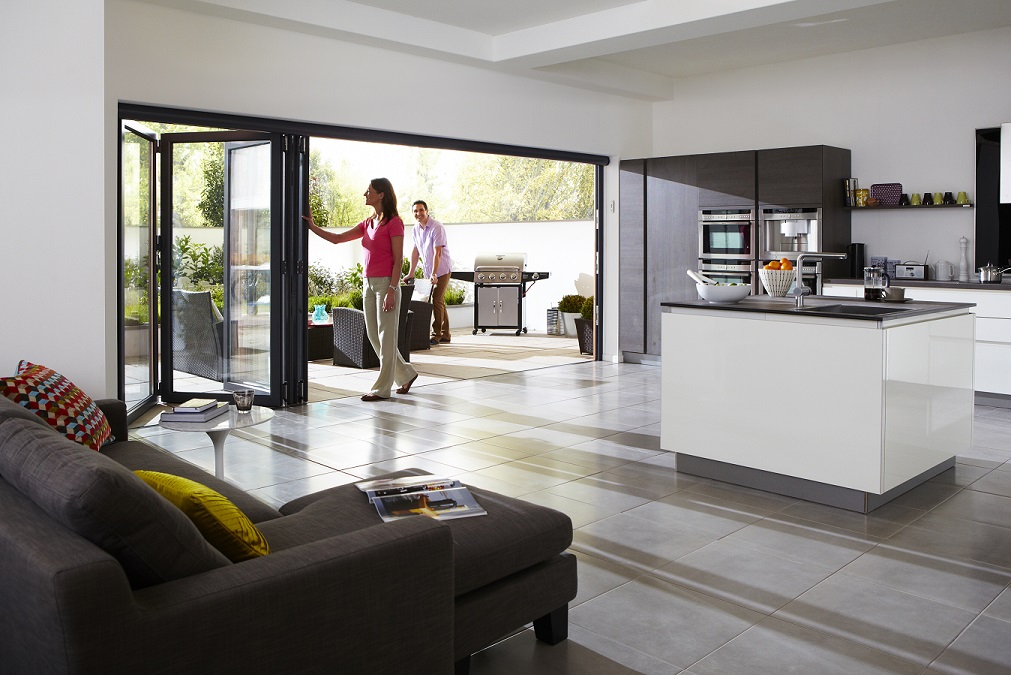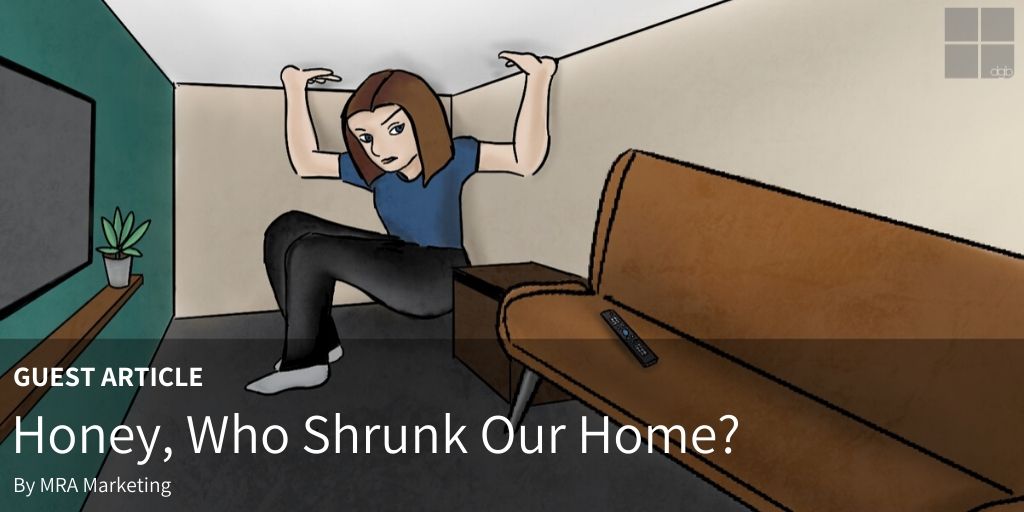The guys at Origin bi-folds have been kind enough to supply a guest post for DGB about the pros and cons of the various types of materials for bi-fold doors. It’s a pretty good one this one, and I have made them make sure it’s not an advertorial ;-) enjoy!
In recent years, bi-fold doors have become a popular alternative to patio doors and have the benefit of being able to cover larger areas of the home with glass, creating a focal point for the room and letting natural light flood in. Although choosing the right bi-fold doors for a project isn’t complicated, it does require some careful consideration when it comes to aesthetics, longevity, security and maintenance of the material.
There are three main materials to choose from for bi-fold doors: uPVC, aluminium and natural wood. Each of these has its own benefits and drawbacks.
uPVC
If you’re looking for standard doors which are low cost and require little maintenance then uPVC (or unplasticised Polyvinyl Chloride) is a good option. Although affordable, uPVC doors don’t have the best longevity as most will only come with a guarantee of 10 years and they can start to look tired well before this, gaining a yellow or pink tinge. Opting for low quality uPVC bi-folding doors can cost you more over time as uPVC isn’t the strongest material when compared to aluminium, for example. Low quality uPVC can warp and bend with age, especially if exposed to direct sunlight for long periods which can make them difficult to open and close.
A key benefit of quality uPVC bi-fold doors is that they require minimal maintenance and can be wiped clean with a cloth to maintain their appearance.
Timber
The biggest advantage of timber bi-fold doors is that they are naturally very beautiful and can be finished with a huge choice of stains or colours. The timber in quality bi-fold doors is usually engineered from a variety of different types of wood which are glued together in layers with polyurethane. This process produces what’s known as ‘engineered timber’ and ensures that the wood is less likely to be affected by the elements as the polyurethane protects the wood from moisture, making it more resistant to twisting or swelling. Engineered timber is more costly than regular timber but non-engineered timber is highly prone to costly problems with the wood’s structure. Although much tougher, even engineered timber can absorb moisture which can cause the door frames to warp, affecting the doors’ gasket seal performance.
Timber’s most obvious downside is that it does require much more maintenance than uPVC or aluminium doors, particularly if the doors receive direct sunlight for long periods.
Aluminium
The strength of aluminium is its biggest asset as the narrow frames are strong enough to allow for very slim sight lines. This means the frame doesn’t encroach on the glazed area and provides a superb view and unprecedented light levels. Compared to timber and uPVC, aluminium is more resistant to flex, expansion and contraction when in direct sunlight so therefore requires very little maintenance to stay in good working order.
A previous downside to aluminium used to be that options for colour finishes were limited to black, white and metallic shades. However, there are now multiple options for coloured finishes for bi-folding doors including the collection from aluminium door specialist Origin which includes 9 different colour palettes featuring every shade from candy pink and bright yellow to deep blues and greens.
Aluminium doors are generally more expensive than timber and uPVC options and the higher price tag can put many people off. The easy maintenance of aluminium bi-fold doors means that in the long run, they are likely to be a better value option than lower priced uPVC or timber doors, especially if these are also low quality.
Depending on your budget, aluminium is the best all-round choice for bi-fold doors and well worth the investment. Timber doors are also a good option but require more maintenance than uPVC or aluminium. For a standard, low cost bi-fold option then, go for uPVC, although bear in mind that uPVC doors don’t measure up in terms of aesthetics or longevity when compared to the other materials.






Timber does not require more maintenance than PVC, you can get a 10 year no painting warranty on timber. PVC looks “tired” after a few year and you can’t freshen it up! Which will last longer? Also the issue with PVC is the inherent strength of PVC? I will leave you PVC guys to try to disagree with me. David Wilson Homes do not fit PVC bifold doors because they have too many issues with them!
The profile from which the door is fabricated doesnt cause as many issues as the actual working parts of the door. What generally happens to a uPVC Bifold is the gearing fails before the client will see any actual “ageing” of the uPVC. Many installers who use uPVC bifolds, and by the way the number is on the decline, see the probelms of this type of door are mostly due to the complicated gearing systems which are required and also the interlinking of the sashes via multiple hinges. All of the components have a tolerance into which they will work,… Read more »
The new aluminium roswewood oak foils are in a diffrent league we do in bifolding doors people like them but some fall over with the cost
“Although affordable, uPVC doors don’t have the best longevity as most will only come with a guarantee of 10 years and they can start to look tired well before this, gaining a yellow or pink tinge.” Personal opinion NOT fact. The ‘Pinking’ issue was specific to one or two particular system companies (won’t name names) who had an issue many years ago which has long since been overcome. The UV stability of PVC-U and foils is as good if not better in some cases than the painted/coated finshes applied to timber & aluminium, for an example you should see the… Read more »
The use of Bi-fold doors may be complex for several peoples as I read above comments, but as I face, the benefits of these, I can say I am highly satisfied with UPVC bi-fold doors. Where aluminium and timber doors are durable and reliable for long duration, there Bi-fold door makes you more relax for some health issues. They give additional safety from UV rays of the sun and protect your house. I agreed that they fade up easily and the pinkish and yellowish sign comes quickly, but that quick is not too quick. Those effects will take minimum 5… Read more »
I have always found Bi-fold doors to be very interesting, and I was curious about how you would choose the material of the actual frames. One thing that really stood out to me about aluminium is that there are multiple color options that weren’t available before! Since my wife loves to choose colors that are pretty out there, it would be nice to have the option to get that sort of color.
Thanks for the tip that timber bi-fold doors can be finished with a huge choice of stains or colors. I am looking to do some renovations in my home and I would like to get new doors that look natural. Finding timber bi-fold doors for installation is something I’ll look into getting.
I love how you said that timber bifold doors are naturally beautiful and can have lots of different colors. My wife and I are wanting to remodel our bedroom. Our closet is going to need a new door and a bifold seems like it could work. I just hope that the opening is wide enough to fit it and that we can find a color to match the decor.